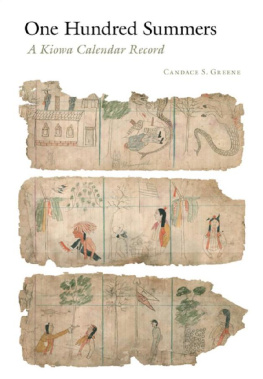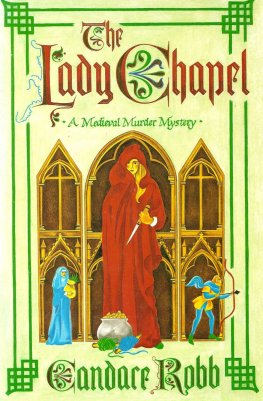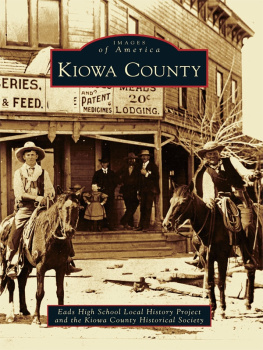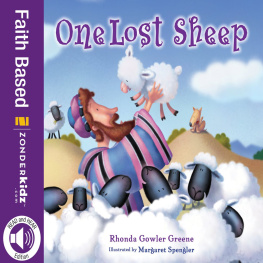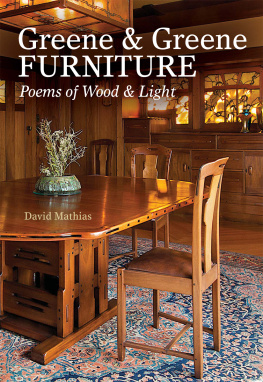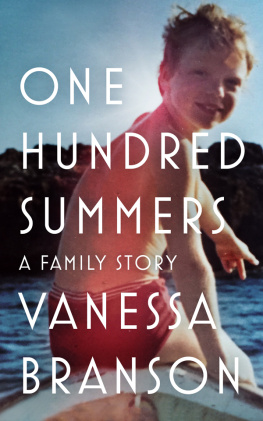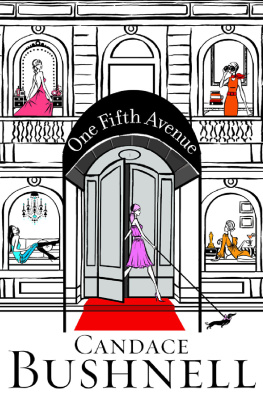Candace S. Greene - One Hundred Summers: A Kiowa Calendar Record
Here you can read online Candace S. Greene - One Hundred Summers: A Kiowa Calendar Record full text of the book (entire story) in english for free. Download pdf and epub, get meaning, cover and reviews about this ebook. year: 2009, publisher: University of Nebraska Press, genre: History. Description of the work, (preface) as well as reviews are available. Best literature library LitArk.com created for fans of good reading and offers a wide selection of genres:
Romance novel
Science fiction
Adventure
Detective
Science
History
Home and family
Prose
Art
Politics
Computer
Non-fiction
Religion
Business
Children
Humor
Choose a favorite category and find really read worthwhile books. Enjoy immersion in the world of imagination, feel the emotions of the characters or learn something new for yourself, make an fascinating discovery.
- Book:One Hundred Summers: A Kiowa Calendar Record
- Author:
- Publisher:University of Nebraska Press
- Genre:
- Year:2009
- Rating:5 / 5
- Favourites:Add to favourites
- Your mark:
- 100
- 1
- 2
- 3
- 4
- 5
One Hundred Summers: A Kiowa Calendar Record: summary, description and annotation
We offer to read an annotation, description, summary or preface (depends on what the author of the book "One Hundred Summers: A Kiowa Calendar Record" wrote himself). If you haven't found the necessary information about the book — write in the comments, we will try to find it.
One Hundred Summers: A Kiowa Calendar Record — read online for free the complete book (whole text) full work
Below is the text of the book, divided by pages. System saving the place of the last page read, allows you to conveniently read the book "One Hundred Summers: A Kiowa Calendar Record" online for free, without having to search again every time where you left off. Put a bookmark, and you can go to the page where you finished reading at any time.
Font size:
Interval:
Bookmark:
One Hundred Summers
One Hundred Summers
A Kiowa Calendar Record
Candace S. Greene
Foreword by
Ellen Censky
Preface by
Daniel C. Swan
Glossary by
Gus Palmer Jr.
UNIVERSITY OF NEBRASKA PRESS | LINCOLN & LONDON
Publication of this volume was assisted by
a grant from the Institute for Museum and Library Services, Washington DC
2009 by the Board of Regents of
the University of Oklahoma
All rights reserved
Manufactured in the United States of America
Library of Congress Cataloging-in-Publication Data
Greene, Candace S.
One hundred summers : a Kiowa calendar record / Candace S. Greene ; foreword by Ellen Censky ; preface by Daniel C. Swan.
p. cm.
Includes bibliographical references and index.
Typeset in Galliard. Printed in China
Some images have been masked due to copyright limitations.
Contents
List of Illustrations vi Foreword by Ellen Censky vii Preface by Daniel C. Swan xi Acknowledgments xv
Note on Language xix
. The Kiowa Calendar Tradition
. The Silver Horn Calendar: A New Discovery 25 3 . The University of Oklahoma Calendar
Kiowa Glossary and Guide to Pronunciation by Gus Palmer Jr.
Appendix A: Little Bluff Calendar Text Appendix B: Hauvahte Calendar Text Appendix C: Other Kiowa Calendars
Notes Bibliography Index
Illustrations
1-1 . Kiowa drawing showing White Horse capturing a Navajo boy
1-2. Nineteenth-century Kiowa territory and subsequent reservation boundaries
1-3. Silver Horn
1-4. Page from the calendar that Silver Horn produced
for James Mooney
1-5. Sheet from the Quitone calendar
2-1. Pictorial conventions from the Silver Horn calendar
2-2. Name glyphs from the Silver Horn calendar
3-1. Calendar entry for 1828 45
3-2 . Calendar entry for 1838 53
3-3 . Setangya, or Sitting Bear
3-4 . Calendar entry for 1849
3-5 . Calendar entry for 185455 75
3-6 . Set-tainte, or White Bear
3-7 . Lone Wolfs son, Tau-ankia
3-8 . Model of the Porcupine Tipi
3-9 . Calendar entry for 1886 119
3-10 . Calendar entry for 1887 121
3-11 . Calendar entry for 1888 123
3-12 . Calendar entry for 189091 128
3-13 . Entry from pictorial diary by Silver Horn
3-14 . Little Bluff with his wife Ankima
3-15 . Unidentified Baptist church in Oklahoma
3-16 . Devastation from the Snyder cyclone
3-17 . Two views of Red Horse
3-18 . Ladies fashion, adapted from the 1908 Sears,
Roebuck Catalogue
3-19 . Delos K. Lonewolf with his wife and son
3-20 . Early aviation at Fort Sill
3-21 . Illustration of a Sun Dance priest
3-22 . Entry for 192122 , from the Quitone calendar
65 69
Foreword
Ellen Censky
Among the greatest pleasures that accompany my work as director of the Sam Noble Oklahoma Museum of Natural History is the opportunity gain a birds eye view of the museums work fostering understanding of the natural and cultural world through collection-based discovery, interpretation, and education, as the museums mission statement puts it. The story of the One Hundred Summers project symbolizes this mission perfectly and in multiple ways. As an artist and historian of his people, the Kiowa, Silver Horn was an acute observer and documenter of the world around him cultural, social, historical, geographic. In crafting his calendar history he was preserving a record of his peoples story, and of their wider perspective on the world, for future generations. He was a native of the region now centered on Oklahoma. The visual documents that he left us, including this calendar history, provide a distinctive and un-paralleled resource for understanding Oklahoma and its place in global history. Silver Horns lifes work thus parallels the mu-seums mission, both promoting understanding of the world in general and exploring Oklahomas place within it. The book before you holds something for almost every interest, contrib-uting in its own special way to fields as diverse as military and aviation history, geography, and meteorology, to say nothing of the obvious disciplines of history, art history, anthropology, and Native American studies. The museum shares many of Silver
Horns interests and my colleagues and I easily find inspiration from his remarkable efforts.
The museums work is about building and using collections to pursue discovery, interpretation, and education. It is a serious responsibility and a distinct honor to steward the Silver Horn calendar in the collections of the Sam Noble Oklahoma Muse-um of Natural History. Museum scholars often make discoveries outside the museum walls, bringing back with them objects and specimens that help document and bring these discoveries to life in tangible form. In the case of the Silver Horn calendar, the discovery was actually a rediscovery, and responsibility for it was not the museums doing. Marcia Bassity discovered the brown paper bundle in which the drawings had long been hid-den underneath a safe, all part of the Roberts Indian Store collection that Mrs. Bassity was organizing after the passing of her aunt, Nelia Mae Roberts. Recognizing the historical and cultural importance of the drawings, Mrs. Bassity contacted the museum and began the process of donating them, and other items from the Roberts collection, to the university. The family was concerned to see to it that these priceless works would be preserved and would become accessible to the native communities of Southwest Oklahoma from which they came as well as to scholars and the general public. The University of Oklahoma was honored to receive the gift, and the museum staff looks forward to preserving and interpreting the collection for generations to come.
After the Roberts-Bassity family rediscovered the drawings, Candace Greene of the National Museum of Natural History at the Smithsonian Institution played a part. First, she confirmed that Silver Horn was the artist/scholar responsible for them. Having already completed a study of Silver Horns life and work, Dr. Greene was the ideal collaborator for this project. Beyond her scholarly credentials and firsthand acquain-tance with many Kiowa people, she possessed the added benefit of knowing the Sam Noble Oklahoma Museum of Natural
viii FOREWORD
History (
There is also the prospect of further discovery. Our hope is that publishing the calendar in full will enable Kiowa community members and scholars of Kiowa culture and history to draw upon it in new ways, both to strengthen educational and historical initiatives and to promote better understandings of Ki-owa artistic, cultural, and social history. Publication of the calendar also makes it available to audiences interested in Native American art, Oklahoma history, and other topics that it touch-es. Most important, publication of the calendar, and especially the educational materials that the museum has prepared to accompany it, are intended to make it useful to younger audiences and their teachers, to enrich their studies both inside and outside the classroom.
On behalf of the museum and the university, a number of oth-er people deserve thanks for their work on this project behind the scenes. Evelyena D. Honeymon provided the University of Oklahoma Foundation with key financial support that enabled the Roberts Indian Store collection to come to the university. Ron Burton and the staff of the tional funding to ensure the collections stabili-zation and its safe delivery to the museum.
Once it came to the university, conservation of the Silver Horn calendar was made possible by a valuable grant from the program Save Americas Treasures. This work was undertaken by paper conservator Ellen Livesay-Holligan and direct-ed by
ix FOREWORD
interpretive, publication also helps preserve the original document, making it available to many who would otherwise require hands-on study of the newly conserved, but still quite fragile, original document.
Next pageFont size:
Interval:
Bookmark:
Similar books «One Hundred Summers: A Kiowa Calendar Record»
Look at similar books to One Hundred Summers: A Kiowa Calendar Record. We have selected literature similar in name and meaning in the hope of providing readers with more options to find new, interesting, not yet read works.
Discussion, reviews of the book One Hundred Summers: A Kiowa Calendar Record and just readers' own opinions. Leave your comments, write what you think about the work, its meaning or the main characters. Specify what exactly you liked and what you didn't like, and why you think so.

